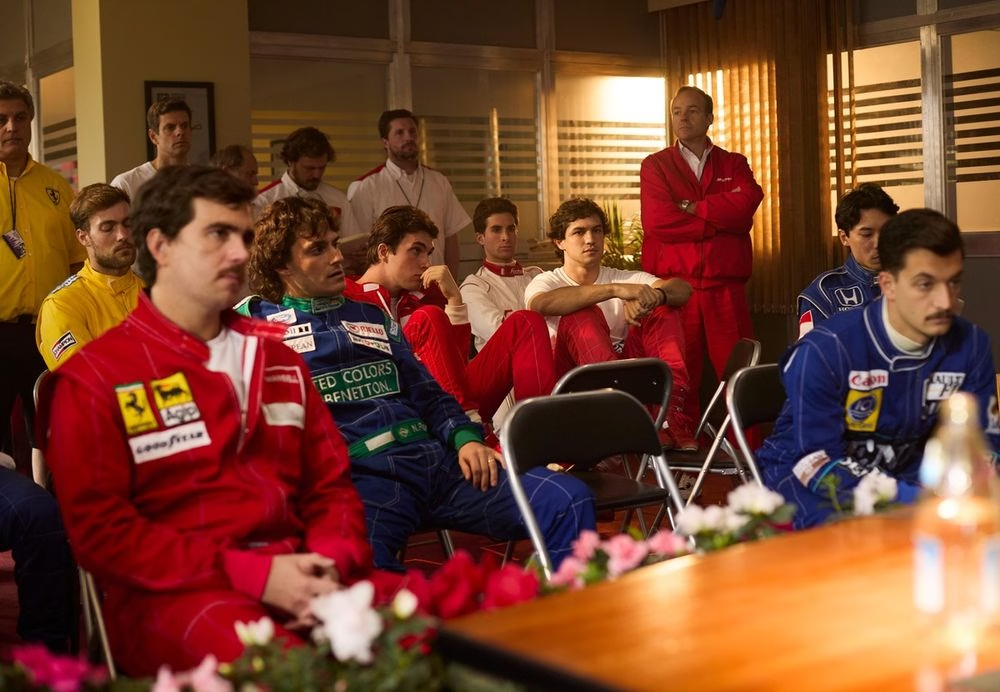If you’re looking for someone inspirational to compare to Ayrton Senna, you’d be right to look at heroes beyond the track. Costume designer Cristina Kangussu, who designed the Brazilian racer’s wardrobe in the upcoming Netflix series “Senna,” had one larger-than-life man in mind. “I like to make an analogy: that in his private life he was Clark Kent and in his public life, with those uniforms and power, he was Superman.”
The three-time world champion was a ruthless competitor, becoming a legend of the sport before his untimely death at the age of 34, and leaving a legacy that’s felt to this day. With the help of Ayrton Senna’s living relatives, a team of filmmakers faced the all-consuming challenge of bringing his life — both on and off the track — to the small screen. No detail was spared, from the engines that roared to the painstaking reproduction of every race suit on the grid.
Photo by: Netflix
Kangussu spent an entire year immersed in the sport. “What was [the] hardest to find images of were the uniforms of all the teams present at all the races, from all eras,” she explained. “We had a commitment to reproduce all the uniforms as they really were, not only of the drivers, but also of the team members, and they were always changing because of the sponsors.” Kangussu’s team conducted extensive research, combing through historical archives, and consulting with the members of Senna’s family tasked with upholding the athlete’s legacy. “I personally had one encounter at the beginning of production with Vivianne, Senna’s sister, and Bianca, his niece, to show some of the costumes and have their inputs,” she said. “According to them, they were all very real.”
Meanwhile, production designer Frederico Pinto was having conversations with Senna’s family members about bringing the Brazilian legend’s entire world to life on screen. He dug through historical footage, photos, and FIA files, along with newspapers and magazines of the time. “We surrounded ourselves with research to portray this time, ensuring that our entire team was on the same historical page,” Pinto explained.
His team was tasked with transforming just a handful of tracks into almost 20 different circuits, from Japan’s Suzuka to Monza in Italy. “We visited more than a dozen race tracks in Brazil, Argentina and Uruguay in search of the perfect curves and straights to replicate real circuits,” Pinto said….
Click Here to Read the Full Original Article at Motorsport.com – Formula 1 – Stories…

